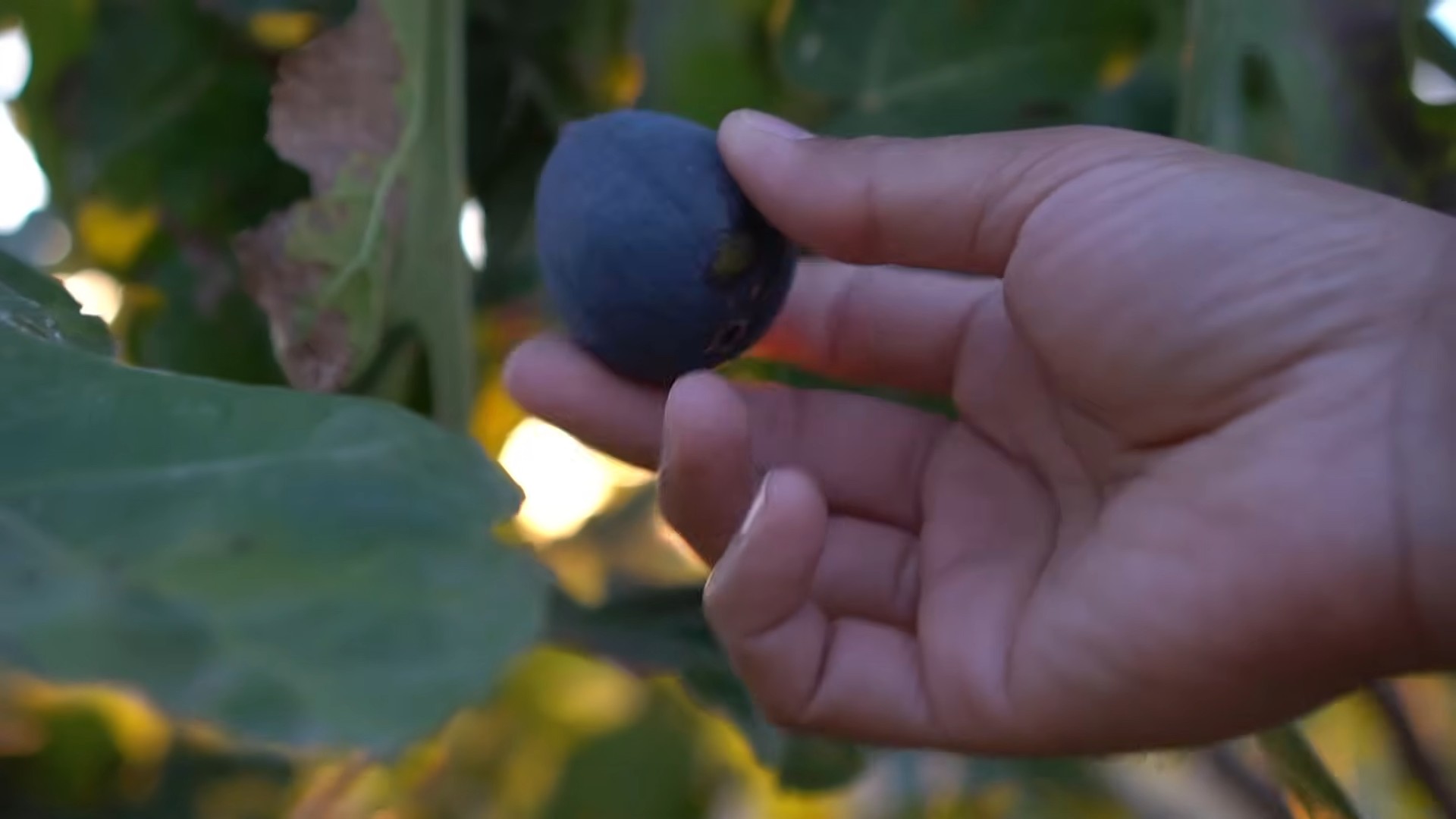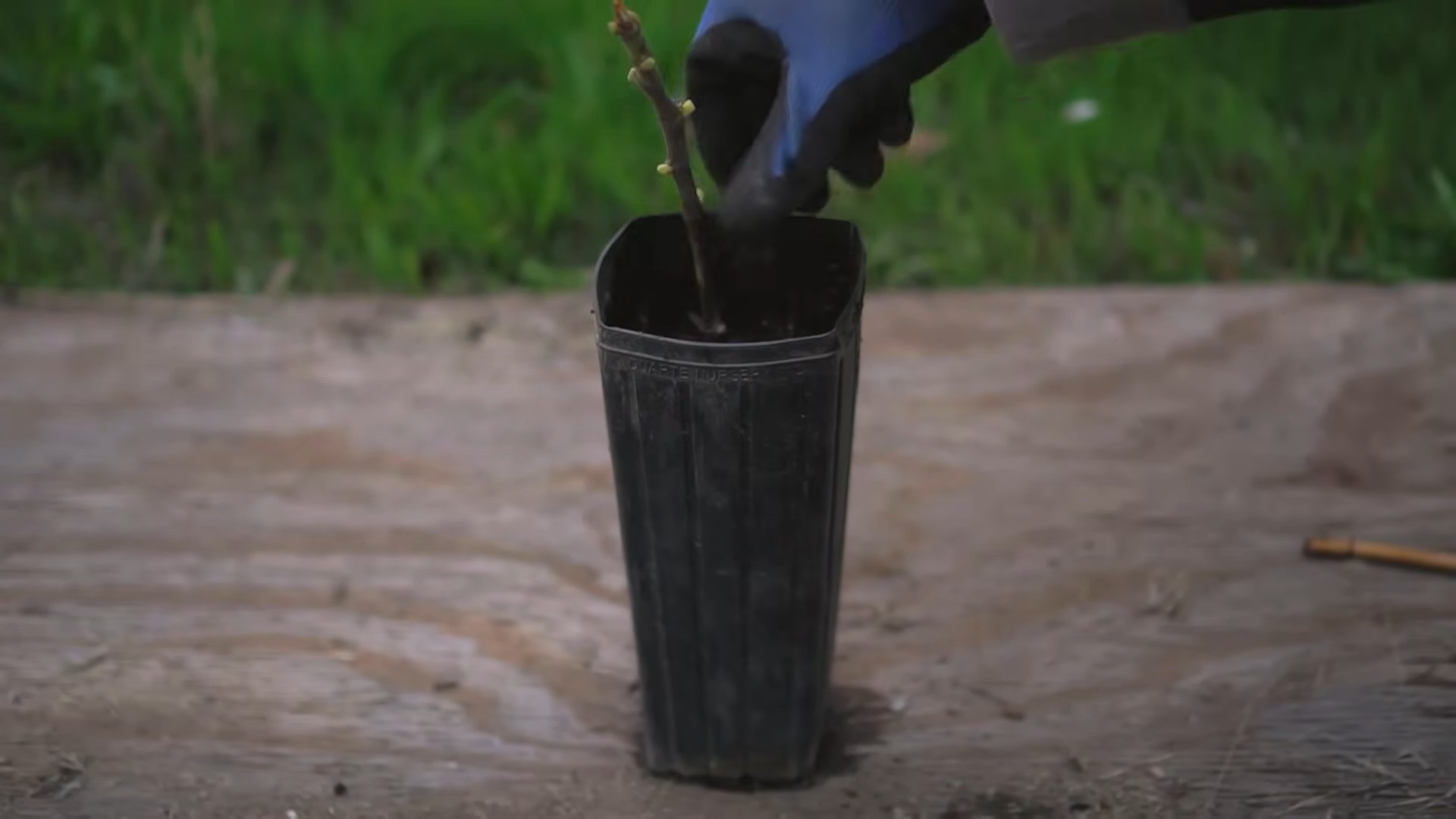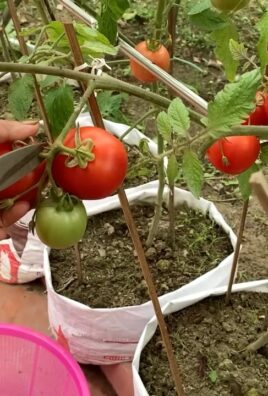Fig Growing Guide: Your Path to Sweet Success!
Have you ever dreamed of strolling through your own backyard, plucking a sun-ripened fig straight from the tree, and savoring its honeyed sweetness? I know I have! For centuries, figs have been cherished, not just for their delicious taste, but also for their rich history and cultural significance. From ancient Greece, where they were considered a sacred fruit, to the Mediterranean, where they’re a staple in countless dishes, figs have always held a special place in our hearts (and stomachs!).
But let’s be honest, the thought of growing your own figs can feel a little daunting. Where do you even begin? That’s where this Fig Growing Guide comes in! I’m here to break down the process into simple, manageable steps, so you can enjoy the satisfaction of harvesting your own homegrown figs, no matter your experience level. Whether you have a sprawling garden or just a sunny balcony, this guide will equip you with the knowledge and confidence to cultivate thriving fig trees.
Why is this DIY guide so essential? Because store-bought figs simply can’t compare to the flavor of a freshly picked, homegrown fig. Plus, growing your own food is incredibly rewarding and connects you to nature in a meaningful way. So, are you ready to embark on this exciting journey? Let’s dive into the wonderful world of Fig Growing Guide and unlock the secrets to a bountiful harvest!

Growing Figs in Containers: A DIY Guide for Luscious Fruit
Hey there, fellow gardening enthusiasts! I’m so excited to share my experience and guide you through the wonderful world of growing figs in containers. It’s easier than you might think, and the reward of fresh, sweet figs right from your own patio is absolutely worth it. Let’s dive in!
Choosing the Right Fig Variety
First things first, selecting the right fig variety is crucial for container growing. Not all fig trees are created equal, and some are much better suited for pots than others. Here’s what I recommend:
* Consider Self-Pollinating Varieties: Look for self-pollinating varieties like ‘Brown Turkey’, ‘Celeste’, ‘Chicago Hardy’, ‘Little Miss Figgy’, or ‘Black Mission’. These don’t require a second tree for pollination, making them perfect for container gardening.
* Dwarf or Compact Growth Habits: Opt for varieties that naturally stay smaller. This will make managing the tree in a container much easier. ‘Little Miss Figgy’ is a great example of a dwarf variety.
* Climate Considerations: Choose a variety that’s known to thrive in your local climate. Check with your local nursery or online resources to see which figs are best suited for your area.
* Taste Preference: Of course, you’ll want to choose a fig that you enjoy eating! Research the flavor profiles of different varieties to find one that suits your taste buds.
Materials You’ll Need
Before we get started, let’s gather all the necessary materials. Having everything on hand will make the process much smoother.
* Fig Tree Sapling: Choose a healthy sapling from a reputable nursery. Look for a tree with strong branches and no signs of disease or pests.
* Large Container: Select a container that’s at least 20-24 inches in diameter and depth. A larger container is better, as it will provide more room for the roots to grow. Make sure the container has drainage holes!
* High-Quality Potting Mix: Use a well-draining potting mix specifically formulated for containers. Avoid using garden soil, as it can become compacted and doesn’t drain well. I like to use a mix of potting soil, compost, and perlite.
* Slow-Release Fertilizer: A slow-release fertilizer will provide your fig tree with essential nutrients over time. Choose a fertilizer that’s balanced and formulated for fruit trees.
* Watering Can or Hose: You’ll need a way to water your fig tree regularly.
* Pruning Shears: Pruning shears will be necessary for shaping and maintaining your fig tree.
* Mulch: Mulch helps retain moisture in the soil and suppress weeds.
* Optional:
* Trowel: A trowel can be helpful for planting and transplanting.
* Gloves: Protect your hands from dirt and thorns.
* Plant Dolly: If you’re using a very large container, a plant dolly can make it easier to move the tree around.
Planting Your Fig Tree
Now for the fun part – planting your fig tree! Follow these steps carefully to ensure a successful start.
1. Prepare the Container: Make sure your container is clean and has adequate drainage holes. If the drainage holes are large, you can cover them with a piece of landscape fabric to prevent soil from washing out.
2. Add Potting Mix: Fill the container about one-third full with your high-quality potting mix.
3. Position the Fig Tree: Gently remove the fig tree sapling from its nursery pot. Loosen the roots slightly, especially if they’re circling the bottom of the pot. Place the tree in the center of the container, making sure the top of the root ball is level with the top of the potting mix.
4. Fill with Potting Mix: Add more potting mix around the root ball, filling the container to within a few inches of the top. Gently press down on the soil to remove any air pockets.
5. Water Thoroughly: Water the newly planted fig tree thoroughly until water drains out of the drainage holes. This will help settle the soil and hydrate the roots.
6. Add Slow-Release Fertilizer: Sprinkle a slow-release fertilizer around the base of the tree, following the instructions on the fertilizer package.
7. Mulch: Add a layer of mulch around the base of the tree, keeping it a few inches away from the trunk. This will help retain moisture and suppress weeds.
Caring for Your Container Fig Tree
Once your fig tree is planted, it’s important to provide it with the proper care to ensure it thrives.
Watering
* Regular Watering: Water your fig tree regularly, especially during hot, dry weather. The soil should be consistently moist, but not soggy. Check the soil moisture by sticking your finger into the soil. If the top inch or two feels dry, it’s time to water.
* Watering Frequency: The frequency of watering will depend on the weather, the size of the container, and the type of potting mix you’re using. In general, you’ll need to water more frequently during the summer months than during the winter months.
* Avoid Overwatering: Overwatering can lead to root rot, so it’s important to avoid letting the soil become waterlogged. Make sure the container has good drainage and that the water drains out quickly.
Sunlight
* Full Sun: Fig trees need at least 6-8 hours of sunlight per day to produce fruit. Place your container fig tree in a location that receives full sun.
* Protection from Intense Heat: In very hot climates, you may need to provide some afternoon shade to protect the tree from scorching.
Fertilizing
* Regular Fertilizing: Fig trees are heavy feeders and need regular fertilization to produce abundant fruit. In addition to the slow-release fertilizer you added at planting, you can also supplement with a liquid fertilizer every few weeks during the growing season.
* Balanced Fertilizer: Use a balanced fertilizer that contains nitrogen, phosphorus, and potassium. You can also use a fertilizer specifically formulated for fruit trees.
* Fertilizing Schedule: Start fertilizing in the spring when new growth appears and continue until late summer. Stop fertilizing in the fall to allow the tree to prepare for dormancy.
Pruning
* Annual Pruning: Pruning is essential for maintaining the shape and size of your container fig tree. It also helps to improve air circulation and sunlight penetration, which can lead to better fruit production.
* Pruning Time: The best time to prune fig trees is in late winter or early spring, before new growth begins.
* Pruning Techniques: Remove any dead, damaged, or crossing branches. Also, prune to shape the tree and encourage branching. You can also prune to remove suckers that grow from the base of the tree.
* Light Pruning: Container figs generally need light pruning to maintain their shape and encourage fruit production.
Overwintering
* Dormancy: Fig trees need a period of dormancy during the winter months to produce fruit the following year.
* Protect from Frost: In colder climates, you’ll need to protect your container fig tree from frost. You can move the container to a sheltered location, such as a garage or shed, or you can wrap the container with burlap or blankets.
* Water Sparingly: During the winter months, water the tree sparingly, only when the soil is dry to the touch.
* Monitor for Pests: Check the tree regularly for pests and diseases, even during the winter months.
Pest and Disease Control
* Common Pests: Fig trees can be susceptible to pests such as aphids, spider mites, and scale.
* Common Diseases: Fig trees can also be susceptible to diseases such as fig rust and leaf spot.
* Prevention: The best way to prevent pests and diseases is to keep your fig tree healthy and well-maintained.
* Treatment: If you do notice pests or diseases, treat them promptly with an appropriate insecticide or fungicide. You can also use organic pest control methods, such as neem oil or insecticidal soap.
Harvesting Your Figs
Finally, the moment you’ve been waiting for – harvesting your figs!
* Ripeness: Figs are ripe when they are soft to the touch and slightly droop on the branch. The skin may also crack slightly.
* Harvesting Time: The harvesting time will depend on the variety of fig and your local climate. In general, figs are harvested in late summer or early fall.
* Gentle Handling: Handle the figs gently, as they are easily bruised.
* Enjoy! Enjoy your fresh, homegrown figs! You can eat them fresh, dry them, or use them in jams, preserves, and other recipes.
Troubleshooting
Even with the best care, you might encounter some challenges

Conclusion
So, there you have it! Mastering the art of fig propagation through cuttings is not only achievable but also incredibly rewarding. This DIY trick, a cornerstone of successful fig cultivation, empowers you to expand your fig orchard without breaking the bank. Forget expensive nursery plants; with a little patience and these simple steps, you can cultivate a thriving collection of fig trees from your existing favorites.
Why is this a must-try? Because it’s cost-effective, environmentally friendly, and gives you complete control over the genetic lineage of your fig trees. You know exactly what you’re getting – delicious, reliable fruit year after year. Plus, there’s a unique satisfaction in nurturing a new plant from a simple cutting, watching it grow and flourish under your care. It’s a tangible connection to nature and a testament to your gardening skills.
But don’t stop there! Experiment with different varieties of figs. Try rooting cuttings in various mediums – some gardeners swear by perlite, while others prefer a mix of peat moss and vermiculite. You can even explore different rooting hormone strengths to see what works best for your specific fig variety. Consider using a heat mat to accelerate the rooting process, especially during cooler months. Another variation is to try air layering, a technique where you encourage roots to form on a branch while it’s still attached to the parent tree. This can be a great option for larger, more established trees.
The possibilities are endless, and the journey is filled with learning and discovery. Remember to observe your cuttings closely, adjusting your watering and humidity levels as needed. Don’t be discouraged if some cuttings don’t take; that’s all part of the process. The key is to keep learning, keep experimenting, and keep propagating!
We wholeheartedly encourage you to try this DIY fig propagation trick. It’s a game-changer for any fig enthusiast, whether you’re a seasoned gardener or just starting out. Once you’ve successfully rooted your fig cuttings, share your experience with us! Tell us about your favorite fig varieties, the rooting methods you found most effective, and any challenges you encountered along the way. Your insights can help other gardeners succeed and contribute to a thriving community of fig lovers. Post your photos and stories on our social media pages using #DIYFigPropagation. Let’s grow together!
Ready to embark on your fig propagation adventure?
Don’t delay! Gather your supplies, select your cuttings, and get ready to witness the magic of fig propagation firsthand. You’ll be amazed at how easy and rewarding it is to create your own fig orchard from scratch. Happy growing!
Frequently Asked Questions (FAQ)
What is the best time of year to take fig cuttings?
The ideal time to take fig cuttings is during the dormant season, typically late fall or early winter after the leaves have fallen. This is when the tree’s energy is concentrated in the branches, making them more likely to root successfully. However, you can also take softwood cuttings in the spring or summer, but these require more careful attention to humidity and temperature. Dormant cuttings are generally easier for beginners.
How long does it take for fig cuttings to root?
Rooting time can vary depending on several factors, including the fig variety, the rooting medium, temperature, and humidity. Generally, you can expect to see roots forming within 3-8 weeks. Be patient and avoid disturbing the cuttings too much during this time. A gentle tug on the cutting can sometimes indicate whether roots have formed, but it’s best to wait until you see roots emerging from the drainage holes of the container.
What kind of rooting hormone should I use?
A rooting hormone containing indole-3-butyric acid (IBA) is generally recommended for fig cuttings. You can find rooting hormones in powder or liquid form. Follow the instructions on the product label carefully. While some gardeners have success without rooting hormone, it significantly increases the chances of successful rooting, especially for harder-to-root varieties.
What is the best rooting medium for fig cuttings?
A well-draining rooting medium is crucial to prevent rot. Popular options include perlite, vermiculite, a mix of peat moss and perlite, or a commercial seed starting mix. Avoid using garden soil, as it can be too heavy and may contain pathogens. The key is to provide a medium that retains moisture but also allows for good air circulation around the roots.
How often should I water my fig cuttings?
Keep the rooting medium consistently moist but not waterlogged. Overwatering can lead to rot, while underwatering can cause the cuttings to dry out. Check the moisture level regularly by inserting your finger into the medium. If it feels dry to the touch, water gently. A spray bottle can be helpful for maintaining humidity without overwatering.
What is the ideal temperature for rooting fig cuttings?
The ideal temperature for rooting fig cuttings is between 70-75°F (21-24°C). A heat mat can be used to provide bottom heat, which can significantly speed up the rooting process. Avoid exposing the cuttings to extreme temperatures or drafts.
How much light do fig cuttings need?
Fig cuttings need bright, indirect light. Avoid direct sunlight, which can scorch the leaves. A sunny windowsill or a grow light can provide adequate light. Once the cuttings have rooted and started to grow, you can gradually acclimate them to more direct sunlight.
How do I know when my fig cuttings are ready to be transplanted?
You can transplant your fig cuttings once they have developed a strong root system and new growth. This typically takes several weeks to a few months. Gently remove the cutting from the rooting medium and inspect the roots. If they are well-developed and circling the bottom of the container, it’s time to transplant.
What kind of soil should I use for transplanting my fig cuttings?
Use a well-draining potting mix that is rich in organic matter. A mix of potting soil, compost, and perlite is a good option. Avoid using heavy clay soil, as it can retain too much moisture and lead to root rot.
Can I grow fig trees in containers?
Yes, fig trees can be successfully grown in containers. Choose a large container with good drainage. As the tree grows, you may need to repot it into a larger container. Container-grown fig trees require regular watering and fertilization.
My fig cuttings are developing mold. What should I do?
Mold can be a problem in humid environments. If you notice mold on your fig cuttings, remove the affected areas immediately. Improve air circulation by opening a window or using a fan. You can also spray the cuttings with a fungicide, following the instructions on the product label. Ensure that the rooting medium is not overly saturated.
Some of my fig cuttings are turning black and mushy. What’s happening?
This is likely due to rot, which is caused by overwatering or poor drainage. Remove the affected cuttings immediately to prevent the rot from spreading. Ensure that the rooting medium is well-draining and that you are not overwatering. You may also want to consider using a fungicide.
Can I use honey as a rooting hormone?
While some gardeners claim that honey can act as a natural rooting hormone, there is limited scientific evidence to support this claim. While honey possesses antibacterial properties that might help prevent fungal infections, it’s generally less effective than commercial rooting hormones containing IBA. For best results, stick to a proven rooting hormone.
How do I care for my newly transplanted fig trees?
After transplanting, water the fig trees thoroughly and keep the soil consistently moist but not waterlogged. Fertilize regularly with a balanced fertilizer. Protect the trees from frost and extreme temperatures. Prune as needed to maintain their shape and encourage fruit production. With proper care, your newly transplanted fig trees will thrive and provide you with delicious fruit for years to come.





Leave a Comment